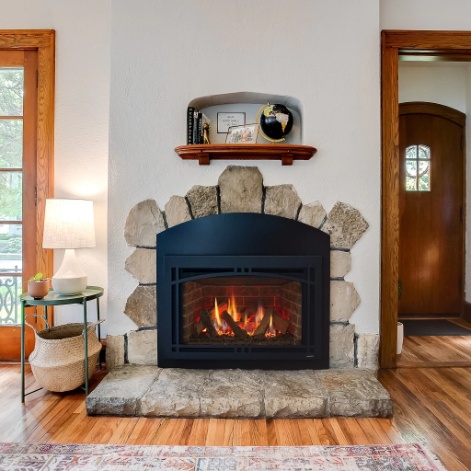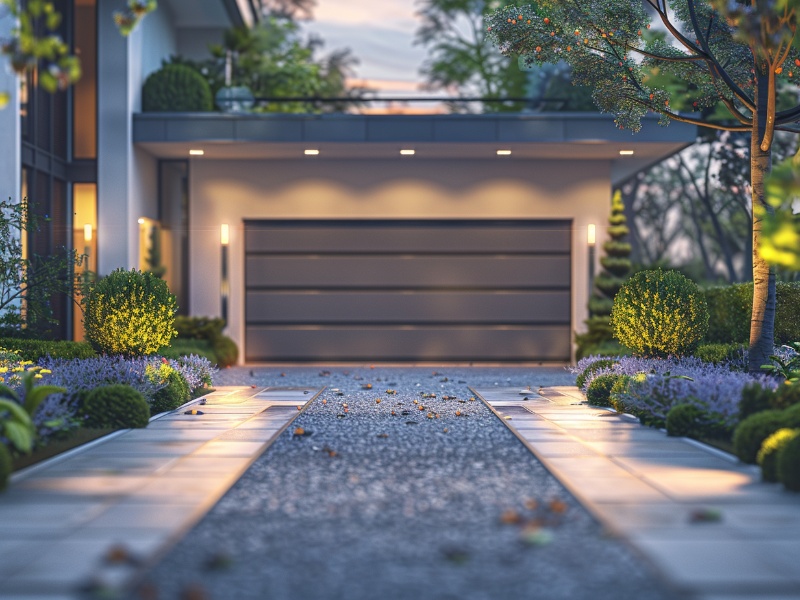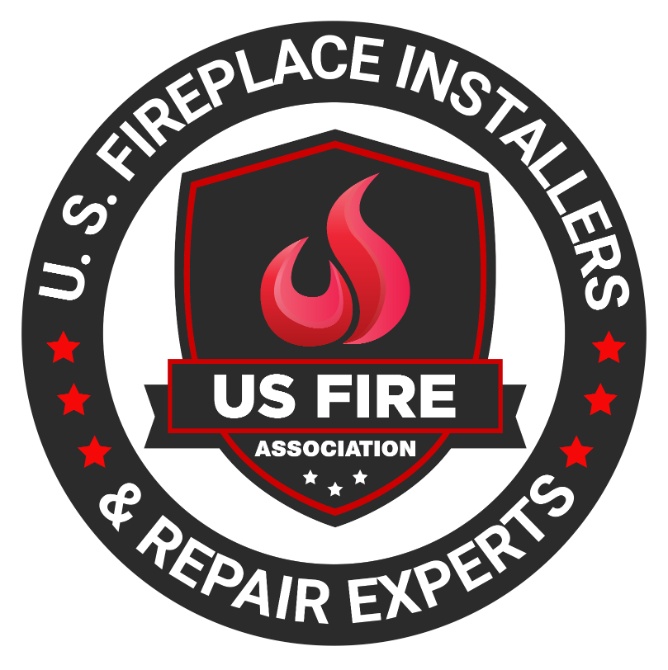Table of Contents
- 1 What Is a Raynor Garage Door?
- 2 What Are the Different Types of Raynor Garage Doors?
- 3 What Are the Common Problems with Raynor Garage Doors?
- 4 What Does It Mean When Your Raynor Garage Door Blinks 10 Times?
- 5 How to Troubleshoot and Fix the 10 Blinks on Your Raynor Garage Door?
- 6 When Should You Call a Professional for Help?
- 7 How to Prevent Future Issues with Your Raynor Garage Door?
- 8 Frequently Asked Questions
If your Raynor Garage Door blinks 10 times, you’re probably wonder what it means. Look no further!
In this article, we will discuss the different types of Raynor garage doors. We will also discuss common problems that may arise, and how to troubleshoot and fix the 10 blinks on your door.
Stay tuned to learn more about maintaining your Raynor garage door and when it’s time to call in the professionals at Dreifuss Fireplaces (& Doors) for help.
What Is a Raynor Garage Door?
A Raynor Garage Door is an automatic door mechanism that provides safety and convenience for homeowners.
These advanced garage doors are equipped with features such as sensors that detect obstacles in the door’s path. This ensures that it does not close on anything or anyone in its way.
Raynor Garage Doors often come with rolling code technology. This makes it extremely difficult for potential intruders to hack into the system and gain unauthorized access to your home.
The smooth operation of these doors makes them a reliable and secure choice for homeowners. Additionally, their robust safety mechanisms make Raynor a safety and functional choice for homeowners.
What Are the Different Types of Raynor Garage Doors?
Raynor Garage Doors come in various types, therefore each has unique components and features.
Some of the most popular types of Raynor Garage Doors include aluminum doors, steel doors, and wood doors.
Aluminum doors are known for their lightweight and durable construction, making them a great option for those seeking a modern look.
Steel doors, on the other hand, offer excellent security and insulation, ideal for homeowners prioritizing safety and energy efficiency.
Wood doors add a touch of elegance and charm to a home’s exterior, providing a classic and timeless appeal.
With options ranging from traditional to contemporary styles, Raynor Garage Doors offer versatility and functionality for every homeowner’s preference and budget.
What Are the Common Problems with Raynor Garage Doors?
Common issues with Raynor Garage Doors can range from simple troubleshooting to complex repair scenarios that require accurate diagnosis.
One common problem that homeowners face with Raynor Garage Doors is the door not opening or closing properly. This issue could be caused by misaligned sensors, a malfunctioning remote control, or a malfunctioning motor.
To troubleshoot this problem, check the alignment of the sensors, replace the batteries in the remote control, and inspect the motor for any signs of damage. If these steps do not resolve the issue, it may require professional repair to replace faulty parts and ensure the garage door operates smoothly.
Door Not Opening or Closing
One of the common problems with Raynor Garage Doors is when the door fails to open or close due to issues with the opener, sensors, or motor.
When encountering such issues, it is essential to inspect the garage door opener to ensure that it is functioning correctly. A malfunctioning opener can disrupt the smooth operation of the door, leading to difficulties in opening or closing.
Faulty sensors can misinterpret signals, causing the door to stop unexpectedly. Motor issues are often a culprit behind garage door malfunction. Over time, wear and tear on the motor can impede its ability to operate efficiently, resulting in operational issues. Regular maintenance and timely repairs can help address these technical malfunctions effectively.
Loud or Strange Noises
Another common problem with Raynor Garage Doors is the occurrence of loud or strange noises, which may indicate issues with the circuit board or sensors.
In cases where the garage door is emitting loud or unusual sounds, it is essential to investigate the root cause to ensure a smooth functioning of the system.
The circuit board controls various electrical components of the door, and any malfunction in it can lead to erratic noises. Sensors play a crucial role in detecting obstacles and ensuring the door operates safely. Issues with sensors can also result in unusual sounds during the door’s operation. Therefore, conducting a thorough examination of these components can help in troubleshooting and resolving the noise-related problems effectively.
Remote Control Not Working
When the remote control for a Raynor Garage Door stops working, it could be due to issues with the LED light, signal communication, or other connectivity problems.
If the LED light on the remote control does not illuminate when buttons are pressed, it might indicate a battery issue or a faulty connection.
To troubleshoot signal communication errors, try reprogramming the remote by following the manufacturer’s instructions.
Ensure that there are no obstructions blocking the signal between the remote control and the garage door opener.
Connectivity issues can often be resolved by checking for interference from other electronic devices or adjusting the positioning of the garage door opener and the receiver.
What Does It Mean When Your Raynor Garage Door Blinks 10 Times?
When your Raynor Garage Door blinks 10 times, it is signaling an error code that indicates a specific issue with the door’s operation.
Understanding the meaning behind these distinct blinking patterns is crucial for troubleshooting and resolving potential problems promptly.
In the case of a 10-time blinking sequence, this commonly signifies an issue with the safety sensors that detect obstructions or obstacles in the door’s path. These sensors play a critical role in ensuring the door operates safely and smoothly.
By interpreting the error code and addressing the underlying cause, homeowners can ensure their garage door functions correctly and maintains optimal safety standards.
Regularly checking and maintaining these sensors can prevent potential hazards and extend the lifespan of the door.
Sensor Obstruction
One possible reason for your Raynor Garage Door blinking 10 times could be a sensor obstruction, requiring troubleshooting to find a solution.
When sensors on a garage door encounter an obstruction, they are unable to communicate properly, leading to error signals like the 10 blinks on your Raynor opener.
To address this issue, start by visually inspecting the sensor units on both sides of the door. Ensure that they are aligned correctly and free from any debris or objects blocking their view.
Check for any wiring issues or loose connections that could be impeding the sensors’ functionality. By systematically troubleshooting these potential problems, you can pinpoint and resolve the sensor obstruction causing the error.
Sensor Misalignment
Sensor misalignment is another potential cause for your Raynor Garage Door blinking 10 times, requiring specific steps to realign and fix the issue.
To troubleshoot this problem, start by visually inspecting the sensors on either side of your garage door. Ensure that they are facing each other directly and are not obstructed by any debris.
Next, use a level to check if they are aligned vertically – they should be at the same height. If needed, adjust the sensors by gently moving them until they are perfectly aligned. Test the door by closing and reopening it to confirm that the 10 blinks issue has been resolved.
Sensor Malfunction
A malfunctioning sensor could be the root cause of your Raynor Garage Door blinking 10 times, necessitating an understanding of the indicator signals for proper diagnosis.
When your garage door sensor malfunctions, it disrupts the communication between the door and its safety system, potentially compromising the security of your home.
The 10-time blinking pattern indicates a specific issue that needs immediate attention. By interpreting these signals correctly, you can identify whether there is an obstruction, misalignment, or wiring problem affecting the sensor’s functionality.
Addressing sensor malfunctions promptly is crucial to prevent accidents and ensure the smooth operation of your garage door system. Regular inspection and maintenance can help detect and resolve sensor issues before they escalate.
How to Troubleshoot and Fix the 10 Blinks on Your Raynor Garage Door?
Troubleshooting and fixing the 10 blinks on your Raynor Garage Door involves a systematic approach to diagnose and repair the underlying issues.
To begin with, when you encounter the 10 blinks on your Raynor Garage Door, it is essential to first check the sensor alignment. Ensure that the sensors are properly aligned, facing each other, and free from any obstructions.
Next, inspect the wiring connections for any loose or damaged wires. Tighten any loose connections and replace any damaged wires to ensure a stable electrical connection. Check the power source and make sure that the garage door opener is receiving adequate power.
If the issue persists, consider resetting the garage door opener by following the manufacturer’s instructions.
Check and Clear Any Obstructions
Start the troubleshooting process by checking and clearing any obstructions that might be causing the 10 blinks on your Raynor Garage Door, seeking professional assistance if needed.
This primary step is essential as obstructions, such as debris or objects in the door’s path, can often disrupt its functioning, leading to error signals like the 10 blinks.
By carefully examining the door’s tracks, sensors, and surrounding areas, you can identify and eliminate any potential blockages.
If the issue persists or appears complex, it is advisable to reach out to skilled technicians who possess the expertise to delve deeper into the troubleshooting process and provide effective solutions for your Raynor Garage Door.
Adjust and Align the Sensors
Next, focus on adjusting and aligning the sensors of your Raynor Garage Door to address misalignment issues causing the 10 blinks, seeking professional expertise for precise adjustments.
Misaligned sensors can lead to various complications, such as the 10 blinks indicating a problem. To rectify this, the first step is to ensure the sensors are facing each other directly and are not obstructed by any objects.
By carefully adjusting the sensors’ positions and angles, you can eliminate signal interference and ensure smooth operation of your garage door. It is crucial to engage with a skilled technician who has the knowledge and tools to calibrate the sensors accurately, guaranteeing optimal performance and resolving any misalignment issues effectively.
Replace Faulty Sensors
If the sensors of your Raynor Garage Door are malfunctioning and causing the 10 blinks, consider replacing them with new parts as a lasting solution to the issue.
Faulty sensors can lead to a variety of operational problems with your garage door, from intermittent malfunctioning to complete failure.
By opting to replace these sensors with high-quality parts, you ensure that your door’s safety features function efficiently and reliably.
Choosing the right replacement sensors compatible with your Raynor Garage Door model is crucial for restoring its proper functionality and preventing future issues.
Investing in top-notch sensor replacements not only resolves the current 10 blinks problem but also provides long-term peace of mind regarding your garage door’s performance.
When Should You Call a Professional for Help?
Calling a Dreifuss Fireplaces (& Doors) professional for assistance with your Raynor Garage Door is advisable when troubleshooting complex issues, requiring expert support and technical knowledge.
Our expert team possesses high skills and training to manage any complex issues your garage door may encounter. From diagnosing faulty sensors to repairing motor malfunctions and resolving problems with door tracks, we have the technical expertise to provide you with a quick and efficient solution.
Seeking professional help can also prevent further damage and ensure the safety and functionality of your garage door. By entrusting the repair and maintenance of your Raynor Garage Door to professionals, you can have peace of mind knowing that your door is in capable hands.
How to Prevent Future Issues with Your Raynor Garage Door?
To avoid future problems with your Raynor Garage Door, regular maintenance, service checks, and acquiring knowledge about its operation are essential preventive measures.
This proactive approach not only ensures the longevity and optimal functionality of your garage door but also helps in identifying and addressing any potential issues early on.
Regular maintenance includes inspecting and lubricating moving parts. Additionally, check for any wear and tear, and keep the tracks clean and aligned. Professional servicing from a qualified technician can further enhance the performance of your garage door system.
Educating yourself on the basic mechanisms of your garage door empowers you to troubleshoot minor issues. It additionally allows you to recognize when you need professional assistance.
Frequently Asked Questions
1. What does it mean when a Raynor Garage Door blinks 10 times?
When your Raynor Garage Door blinks 10 times, it signals an issue with the door’s safety sensors, indicating an obstruction, misalignment, or malfunction.
2. How can you troubleshoot the 10 blinks on a Raynor Garage Door?
To troubleshoot the 10 blinks, start by checking for any obstructions, adjusting and aligning the sensors, and if necessary, replacing faulty sensors with new parts.
3. When should you seek professional help for your Raynor Garage Door?
If troubleshooting does not resolve the issue or if you encounter complex problems, call Dreifuss Fireplaces (& Doors) for expert assistance and technical support.
4. How can future issues with a Raynor Garage Door be prevented?
Regular maintenance and service checks are key to preventing future problems. Additionally, understanding the operation of your garage door ensures its longevity and optimal functionality.
5. What are the common problems with Raynor Garage Doors?
Common issues include the door not opening or closing properly, making loud or strange noises, and the remote control not working, often due to opener, sensor, or motor issues.
6. What types of Raynor Garage Doors are available?
Raynor offers a variety of garage doors. These include aluminum, steel, and wood doors. Each provides unique benefits such as durability, security, and aesthetic appeal.
Latest Articles

What Is An NG (Natural Gas) Indicator And Why You Need It For Your Fireplace
Table of Contents1 Understanding Natural Gas Fireplaces2 What is an NG Indicator?3 Importance of NG Indicators for Safety4 Types of NG Indicators5 Installation and Maintenance of NG Indicators6 Signs of a Faulty NG Indicator7 Frequently Asked Questions Natural gas fireplaces are a favored option among numerous homeowners due to their convenience and effectiveness. But, what is an NG (Natural Gas) indicator and why you need it for your fireplace? It is imperative to comprehend how they function and the significance of having an NG (Natural Gas) indicator for safety purposes. This article delves into the definition and significance of NG indicators. We will discuss the potential hazards associated with the absence of one and the various types of indicators accessible. Also, we will discuss installation and maintenance recommendations, and methods to recognize and rectify issues with malfunctioning indicators. Stay well-informed and ensure the safety of your home by referring to this exhaustive guide. Understanding Natural Gas Fireplaces Natural gas fireplaces serve as an efficient and convenient heating option for numerous households. They utilize natural gas as a fuel source to deliver consistent warmth and ambiance. How They Work and Why They Need NG Indicators The operation of natural gas fireplaces involves igniting natural gas to generate heat. This process requires diligent monitoring to ensure both safety and efficiency, a task facilitated by the use of NG indicators. NG indicators play a critical role in detecting potential gas leaks. They enable residents to promptly address and mitigate any associated hazards. Through continuous monitoring of gas levels and providing timely warnings and alerts, NG indicators uphold a secure indoor environment. It is imperative to ensure that these indicators function properly to facilitate the effective operation of natural gas fireplaces. This helps mitigate the inherent risks linked to gas leaks. What is an NG Indicator? An NG indicator is a specialized device equipped with advanced sensors and technology. It is specifically designed to detect natural gas leaks and monitor gas pressure in appliances, such as fireplaces. Definition and Purpose The NG indicator functions as a detector that monitors gas appliances for potential leaks. It provides essential functionality to ensure safety in households utilizing natural gas. These detectors play a crucial role in protecting residences by notifying occupants of dangerous gas leaks long before they escalate into perilous situations. Through continuous monitoring of gas levels in the vicinity, NG indicators offer an additional layer of protection. This is particularly important in properties that rely on gas-operated fireplaces or stoves. These devices not only help avert potential disasters but also enhance the overall peace of mind of homeowners. They assure them that their living spaces are equipped with reliable safety features. Importance of NG Indicators for Safety Natural gas indicators are essential for maintaining safety in households equipped with natural gas appliances. These devices serve as a proactive measure to promptly detect gas leaks. This offers homeowners a sense of security and assurance. Potential Dangers of Not Having an NG Indicator The absence of an NG indicator in residences equipped with natural gas appliances can pose significant hazards. This includes the risk of undetected gas leaks , carbon monoxide poisoning , and pilot outages that may lead to dangerous situations. These potential risks can profoundly impact indoor air quality. They directly influence the health and safety of individuals residing in the household. Undetected gas leaks can go unnoticed, gradually permeating the air and creating a potentially explosive environment. Insufficient ventilation from undetected exposure to carbon monoxide can lead to serious health complications. These range from mild symptoms such as dizziness to fatal poisoning. Without proper monitoring from an NG indicator, families are left susceptible to these concealed threats. This underscores the critical importance of implementing proactive measures to mitigate such risks. Types of NG Indicators Indicators for Natural Gas (NG) are available in diverse types. Each presents distinct detection capabilities tailored to specific requirements, encompassing both manual and automated alternatives. Manual vs. Automatic Indicators Manual NG indicators require user intervention for monitoring gas levels and identifying leaks. On the other hand, automatic indicators employ sophisticated technology to deliver continuous, real-time monitoring. This heightened efficiency and oversight enhance safety protocols. Conventional manual indicators rely on individuals to physically inspect and evaluate gas levels periodically. This renders them more susceptible to human errors. Conversely, automatic indicators feature sensors capable of promptly detecting even the most minute fluctuations in gas levels. This establishes a more dependable and precise monitoring mechanism. Automatic indicators can activate alerts and shut-off systems upon detecting a leak. This ensures immediate action to avert potential hazards. This advanced technology enhances safety protocols and instills a sense of command and assurance among users. Installation and Maintenance of NG Indicators The reliable and accurate performance of NG indicators necessitates proper installation and consistent maintenance. This often entails professional installation and adherence to recommended service guidelines. Proper Installation and Regular Maintenance Tips The proper installation of NG indicators involves adhering to the specifications in the user manual. Maintenance protocols entail strict adherence to a predetermined maintenance schedule to ensure sustained operational efficiency. During the installation phase, it is imperative to verify that the NG indicators are securely affixed in the designated location as stipulated by the manufacturer. Crucial steps include confirming power source compatibility and ensuring proper grounding of the device to optimize performance. Calibration of the indicator must be executed meticulously to ensure precise readings. Regarding maintenance, essential practices include regular inspection for signs of wear, thorough cleaning of the indicator components, and routine functionality tests. By allocating time to a consistent maintenance regimen, the NG indicator can operate with optimal efficiency over an extended duration. Signs of a Faulty NG Indicator Recognizing indicators of a malfunctioning NG indicator is essential for upholding safety and performance standards. Inaccuracies and detection issues can undermine the efficacy of these devices. Identifying and Addressing Issues The process of identifying and addressing issues related to NG (natural gas) indicators requires a systematic troubleshooting approach. This ensures their optimal performance

What You Need To Know About Gas Log Set Safety And Installation Considerations
Table of Contents1 Understanding Gas Log Sets2 Safety Considerations for Gas Log Sets3 Installation Guidelines for Gas Log Sets4 Maintaining and Troubleshooting Gas Log Sets5 Frequently Asked Questions Gas log sets are a favored option among homeowners seeking to enjoy the comfort and atmosphere of a conventional fireplace without the inconvenience of wood. This article tells you what you need to know about gas log set safety and installation considerations. Before incorporating one into your residence, it is imperative to understand the safety considerations associated with their use. This discussion delves into the potential hazards linked with gas log sets. It presents crucial precautions to uphold the safety of your home. Also, it outlines proper installation procedures and offers insight into common errors to avoid. Finally, it provides advice on maintenance and troubleshooting. Gain comprehensive knowledge on gas log set safety and installation considerations. Understanding Gas Log Sets Comprehending gas log sets is essential for individuals seeking to elevate their fireplace experience, and for gas lag set safety and installation. These heating appliances can operate on either natural gas or propane. In addition, they are available in a range of styles, including vented, ventless, and vent-free options. They provide an array of benefits and customization opportunities through various fireplace accessories. What are Gas Log Sets? Gas log sets are meticulously crafted artificial logs. They are designed to imitate the appearance and functionality of authentic wood logs within fireplaces. These gas log sets typically consist of ceramic or refractory concrete logs that have been skillfully molded and painted. This allows them to replicate the natural grain and texture of real wood. The logs are arranged in various configurations within the fireplace. They establish a realistic and welcoming ambiance. In addition to the logs, gas log sets often include fireplace accessories such as glowing embers. Accessories also include decorative stones, and even pine cones to enhance the overall aesthetic appeal. Homeowners can select from an array of placement options. These include traditional wood stack, cascading driftwood, or a contemporary geometric arrangement. Homeowners can align their preferred style and design preferences. Safety Considerations for Gas Log Sets Safety considerations for gas log sets are of utmost importance to guarantee a secure and pleasant fireplace experience. It is essential to address potential hazards such as carbon monoxide exposure, gas leaks, and fire safety to maintain a safe environment for homeowners. Potential Hazards and Precautions Gas log sets come with potential hazards that must be taken seriously, including the risks of gas leaks, carbon monoxide poisoning, and fire incidents. It is imperative to establish and adhere to rigorous safety measures to ensure the well-being of individuals and properties involved in the use of gas log sets. Gas leaks represent a significant hazard when utilizing gas log sets. They can result in the accumulation of combustible gas within the premises, heightening the possibility of explosions or fires. Carbon monoxide, an insidious gas generated during incomplete combustion, poses a grave threat due to its colorless and odorless nature, making it undetectable without proper monitoring. To address these risks effectively, it is vital to install carbon monoxide detectors and gas leak sensors in the vicinity of the gas logs. Routine maintenance checks on the gas log system, including cleaning and inspection procedures, are critical to ensure safe operations and the prompt identification of potential issues. In case of a gas leak or suspected presence of carbon monoxide, immediate evacuation of the affected area is paramount, followed by prompt contact with emergency services. Recognizing the distinct odor of rotten eggs associated with natural gas can serve as an early warning sign, prompting swift actions to avert any potential accidents. Installation Guidelines for Gas Log Sets The installation of a gas log set necessitates meticulous planning and strict adherence to specific guidelines. This includes verifying a secure gas connection, ensuring proper gas lines are in place, and complying with local building codes. Often, the complexity of these requirements may require the expertise of a certified technician. Proper Installation Techniques The appropriate installation procedures for gas log sets involve the secure connection of gas lines, meticulous adherence to installation manuals, and strict compliance with local building codes. It is imperative to prioritize the guarantee of secure gas connections to avert leaks and potential safety hazards. During the installation of gas log sets, utilizing suitable sealants and fittings is essential to establish a tightly sealed connection. The correct installation of gas lines is critical for both the safety and operational efficacy of the gas log set. Reference to the installation manual is highly advisable for detailed, step-by-step guidance to prevent inaccuracies and ensure the successful establishment of the gas log set. Consistently adhering to building codes and regulations upholds safety standards. Seeking guidance and confirmation from a certified technician before and after installation can offer invaluable support and assurance throughout the process. Common Installation Mistakes to Avoid It is imperative to avoid common installation errors to ensure the secure and effective operation of gas log sets. This includes verifying proper gas connections and compliance with building codes. Improper gas connections can result in leaks and potential hazards, underscoring the importance of verifying the tightness and correct alignment of all fittings. Failure to adhere to building codes can lead to structural complications, penalties for non-compliance, or even safety concerns. To prevent these oversights, it is advised to consult the manufacturer’s installation guidelines and strictly adhere to local regulations. Engaging a certified technician for the installation of gas log sets guarantees that the procedure is carried out accurately and securely. This provides assurance that the system is functioning as intended. Maintaining and Troubleshooting Gas Log Sets Regular maintenance and troubleshooting of gas log sets are imperative to uphold their optimal performance and safety. This includes thorough examination of the pilot light, pilot assembly, and other gas appliances to preserve heating efficiency and promptly resolve any arising issues. Tips for Maintenance and Repair Ensuring the proper maintenance of your gas log set necessitates conducting

Key Considerations For Using Compressed Liquid Propane In Fireplace Installation
Table of Contents1 What is Compressed Liquid Propane?2 Benefits of Using Compressed Liquid Propane in Fireplaces3 Safety Precautions for Installing Compressed Liquid Propane Fireplaces4 Installation Process for Compressed Liquid Propane Fireplaces5 Maintenance and Care for Compressed Liquid Propane Fireplaces6 Alternative Fuel Options for Fireplaces7 Frequently Asked Questions If you are contemplating the use of compressed liquid propane in your fireplace installation, this discussion will delve into the advantages of adopting this alternative fuel option. These benefits include enhanced efficiency, cost savings, and important safety precautions to consider. Furthermore, a detailed step-by-step guide on the installation process will be provided, along with recommendations for maintenance and care. A comparison of various fuel options for fireplaces will also be conducted to assist you in making an informed decision. We encourage you to stay engaged to gain insights into optimizing your fireplace’s capabilities with compressed liquid propane. What is Compressed Liquid Propane? Compressed Liquid Propane is a versatile energy source contained in a high-pressure propane tank. It finds extensive utility in both residential and commercial settings, prominently including fireplaces. Recognized for its convenience and efficiency, Compressed Liquid Propane emerges as a favored option for heating residential spaces and facilitating culinary pursuits across various environments. Additionally, it serves as a viable fuel substitute in vehicular contexts, portable cooktops, and outdoor grilling scenarios due to its propensity for clean combustion. The attribute of portability, coupled with ease of storage, positions Compressed Liquid Propane as an optimal energy source for individuals residing off the conventional grid. It is also great for engaging in outdoor activities such as camping and recreational vehicle (RV) travel. Moreover, the high energy density inherent to Compressed Liquid Propane renders it a dependable choice for sustaining generators during instances of power disruptions. Benefits of Using Compressed Liquid Propane in Fireplaces Utilizing Compressed Liquid Propane for fireplace installation presents several benefits. These include enhanced fuel efficiency, convenience, cost-effectiveness, and a favorable environmental footprint. These attributes render it a recommended option for heating solutions, applicable to both on-grid and off-grid settings. Efficiency and Cost Savings The utilization of Compressed Liquid Propane in fireplaces offers significant advantages, notably in terms of high fuel efficiency and cost-effectiveness. These attributes are underscored by the exceptional BTU rating and overall heating efficiency of Compressed Liquid Propane. The elevated fuel efficiency exhibited by Compressed Liquid Propane fireplaces necessitates less fuel to generate the same level of heat compared to traditional wood-burning fireplaces or electric heating systems. Consequently, homeowners can realize cost savings on their heating expenditures over an extended period. Moreover, the clean-burning characteristics of propane minimize maintenance costs linked to soot and ash cleanup. This further enhances the cost-effectiveness of employing propane fireplaces. Safety Precautions for Installing Compressed Liquid Propane Fireplaces Ensuring safety is of utmost importance during the installation of Compressed Liquid Propane fireplaces. This requires strict adherence to safety regulations, meticulous attention to proper ventilation requirements, careful control of ignition sources, and the incorporation of carbon monoxide and gas leak detection systems. Important Safety Measures Essential safety protocols for the installation of Compressed Liquid Propane fireplaces encompass adherence to fire safety regulations. Engaging in professional assessments and employing sophisticated gas leak and carbon monoxide detection mechanisms is crucial. Professional evaluations play a critical role in identifying any prospective hazards or irregularities within the fireplace infrastructure. These assessments are vital in ensuring the operational integrity of all components and compliance with safety protocols. Routine inspections serve to forestall potential fire incidents, gas discharges, or carbon monoxide emissions that could pose significant threats to both the property and individuals in the vicinity. The utilization of advanced gas leak and carbon monoxide detection systems serves as an additional safeguard by promptly notifying occupants of any elevated levels of these hazardous gases. Installation Process for Compressed Liquid Propane Fireplaces The installation procedure for Compressed Liquid Propane fireplaces encompasses several critical steps. These include: Adhering to installation guidelines Correctly positioning the propane tank Ensuring precise gas line installation Optimizing heat output Monitoring pressure regulation Establishing the pilot light Step-by-Step Guide The installation process of Compressed Liquid Propane fireplaces involves a systematic approach. This begins with the construction of the firebox, followed by the installation of the gas control valve, setup of the ignition system, design of the flue, and verification of a suitable combustion air supply. The construction of the firebox assumes critical importance as it serves as the foundation of the fireplace structure. It securely holds the combustible materials in place. Subsequently, the gas control valve plays a key role in managing the propane flow, guaranteeing safe and efficient operation. The installation of the ignition system facilitates convenient and reliable fire initiation. Designing the flue is a necessary step to direct exhaust gases outside, thus preventing their accumulation indoors. Moreover, ensuring a proper combustion air supply is essential to sustain optimal burning conditions and enhance fuel consumption efficiency. Each component contributes significantly to the functionality and safety of the fireplace installation process. This underscores the importance of meticulous attention to detail and adherence to established protocols. Maintenance and Care for Compressed Liquid Propane Fireplaces Consistent maintenance and attention to Compressed Liquid Propane fireplaces are imperative to guarantee their optimal functionality. This includes adherence to prescribed maintenance protocols, regular chimney upkeep, prevention of soot accumulation, and scheduling of routine propane deliveries and professional inspections. Tips for Keeping Your Fireplace in Good Condition For the maintenance of your Compressed Liquid Propane fireplace, it is essential to conduct regular checks on ignition sources. Monitor flame appearance, clean the gas burner and pilot assembly, and verify the correct operation of the safety shut-off valve. The inspection of ignition sources requires a detailed examination of the electronic igniter. This helps identify any signs of damage or corrosion and ensures proper sparking upon activation. Monitoring flame appearance involves observing a consistent blue flame with minimal flickering, which signifies efficient combustion. Cleaning the gas burner and pilot assembly can be performed using a soft brush or compressed air to eliminate any dirt or debris that may


















































































